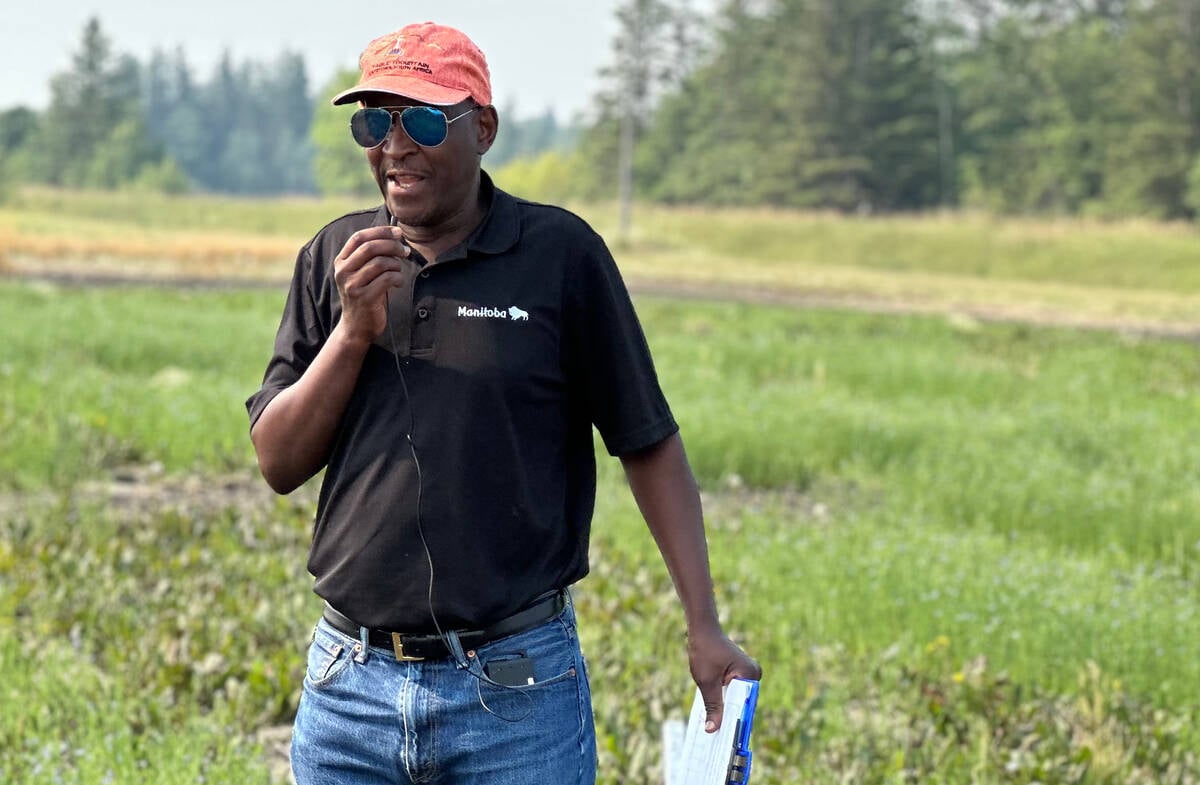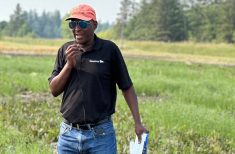After a season of drought followed by a disappointing harvest, many farmers saw a silver lining in the fact that the conditions left them with a significant amount of residual nitrogen — as much as four times the normal levels in some areas.
It was good news at a time when input costs, including fertilizer, were reaching astronomical levels. That carry-over nitrogen was “money in the bank,” according to Manitoba Agriculture soil fertility specialist John Heard.
Why it matters: Producers hoping to avoid some fertilizer cost thanks to last year’s poor growing conditions will likely be disappointed, thanks to 2022’s wet spring.
Read Also

How much nitrogen can farmers really cut?
Manitoba fertilizer trials look for nitrification inhibitor sweet spot, to lower greenhouse gas emissions and cost without hurting yield.
Until recently, while there was concern that some of that valuable nutrient may have leached from the surface, particularly in areas with coarse sandy soil, there was still hope that nitrogen would be available for this year’s crop.
Initial testing this spring, however, suggests many of those hopes will be dashed. Soil sampling done by Heard appears to show those nutrients are no longer in the top layers of the soil.
“Last fall, there was a big chunk of nitrogen – in many cases, 80-90 lbs. in the top six inches,” he said. “Now, there’s very little in the top six inches. Most of it has moved down to (the) six- to 24-inch depth. There’s about 20 to 40 lbs. (per acre) less nitrogen in the top two feet.”
The samples were taken mainly from clay soils in the Red River Valley, where water was more than plentiful. Despite dramatic photos, with parts of that area going underwater this spring, Heard said he’s sampled a lot of stickier, wetter soils in the past, “so I’d say the topsoil is not completely saturated. The clay has shed the water,” he said.
What should farmers do?
For farmers, this result presents a mixed bag.
“If they were stressed out about growing soybeans because they had high nitrate levels, they can stop fretting because there isn’t a lot of nitrogen left in the top six inches…they can seed away,” Heard said.
If farmers were counting on nitrogen for their canola or wheat crops, however, Heard notes that they may need to revise their application plans upwards by 20-40 lbs./ac. to compensate for nutrients lost.
However, Heard notes that at this moment, farmers should prioritize seeding. If they suspect substantial nitrogen losses have occurred, they can top-dress with nitrogen later.
“Get the crop in the ground and then make your adjustments later,” he said.
Verifying N loss
Producers who’d like to verify those losses may want to place a nitrogen-rich strip in the field, where higher nitrogen is applied. If colour differences are apparent in mid-June, losses are probably substantial and some replenishment can be done during stem elongation of cereals and prior to bolting in canola.
Heard’s sampling is based on data from a number of agronomists who provided him with GPS co-ordinates for fall-sampled fields from some of their clients’ high-testing fields. This spring he sampled a number of fields in central Manitoba.
That sampling led Heard to make the following observations:
- All soils started the year as high to very high in nitrogen. Most ranged from clay loam to heavy clay soils, but were not flooded.
- It is apparent that the extremely high nitrogen levels present in the top six inches of soil last fall moved deeper due to leaching.
- Total nitrogen loss from the zero- to 24-inch depth was modest, ranging from about 20-60 lbs./ac., but most soils still tested high in total nitrogen.
- Sampling avoided fields with fall-applied nitrogen due to the difficulty in interpreting such samples, which contain both ammonium and nitrate forms and are often placed in bands.
- Losses reported here are most likely due to leaching. With warm soil any further flooding or saturation will increase de-nitrification loss.
Heard acknowledged Mitch O’Brien, Dane Froese, Dan Fox, Field2Field, Kory Van Damme and Amber Knaggs as his soil sampling partners.
















